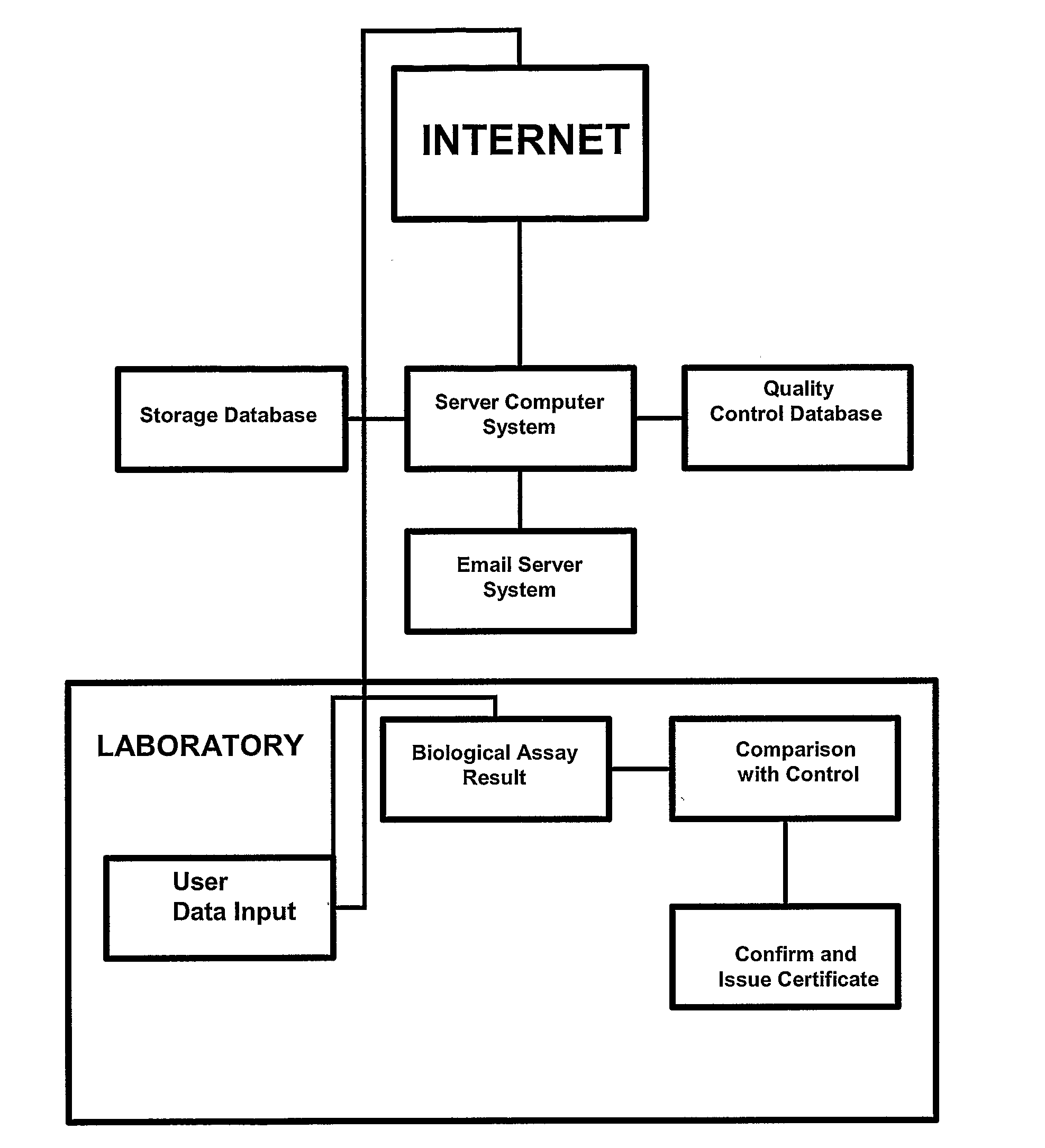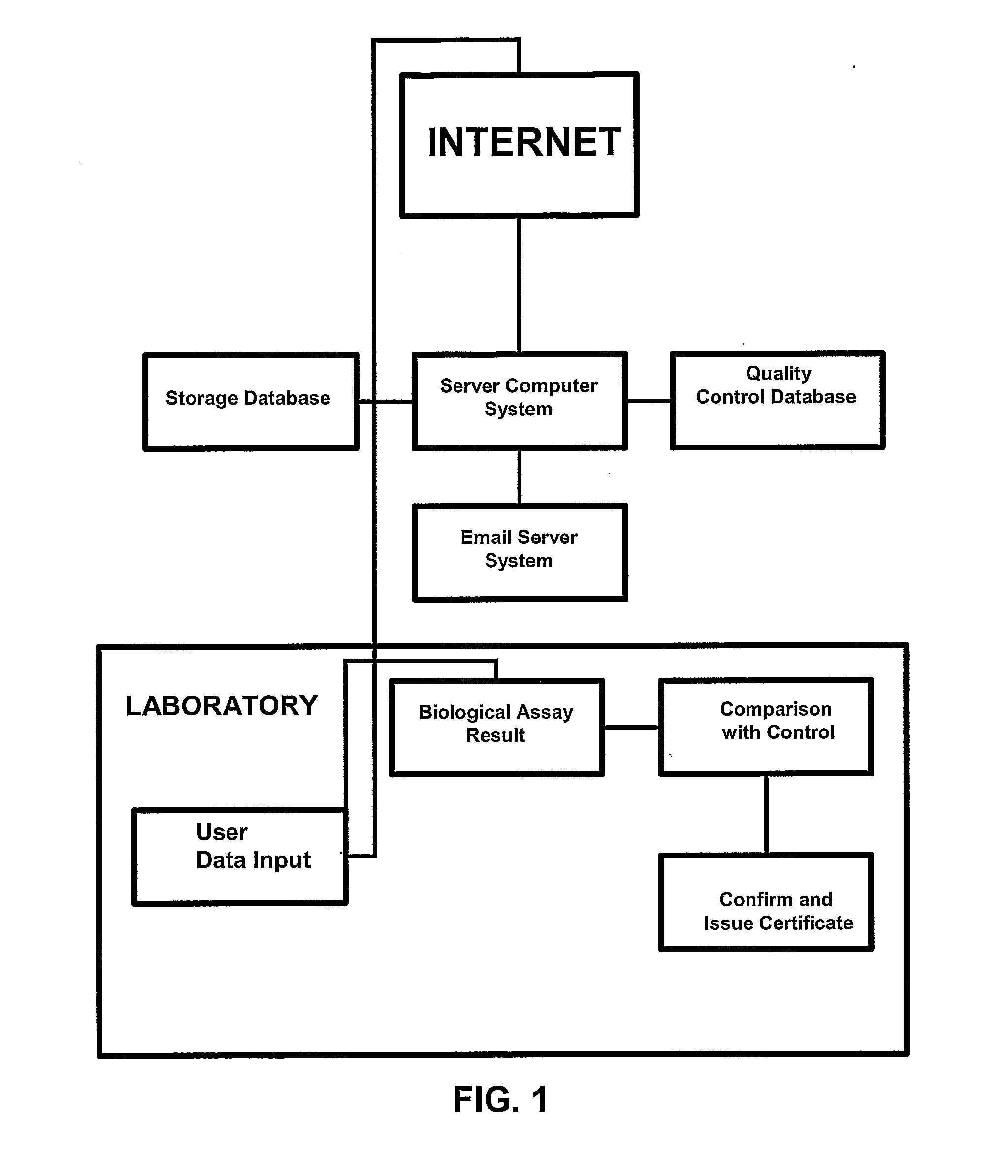Compositions and Methods Comprising Biological Samples for Quality Controls
a biological sample and composition technology, applied in the field of compositions and methods comprising biological samples for quality control, can solve the problems of inability to solve fragments that are either too small or only very slightly in size, and the resolvability of size-based protocols is inherently limited by the resolving power, so as to improve the sensitivity, precision, reliability, and accuracy of biological assays.
- Summary
- Abstract
- Description
- Claims
- Application Information
AI Technical Summary
Benefits of technology
Problems solved by technology
Method used
Image
Examples
example 1
[0075]Table 1 shows DNA profiles of STRs that includes the 13 CODIS STR loci D3S1358 (D3), VWA, FGA, D8S1179 (D8), D21S11 (D21), D18S51 (D18), D5S818 (D5), D13S317 (D13), D7S820 (D17), D16S539 (D16), THO1, TPOX, CSF1PO (CSF), AMEL, and D2S1338 (D2), and D19S4×(D19). These loci are known in to those of ordinary skill in the art and have GenBank Accession number listed in Table A below.
TABLE AGENBANK ACCESSION NUMBERS OF STR LOCISTR LOCUS NAMEGENBANK ACCESSION NO.TPOXM68651D2S1338 (D2)G08202D19S433 (D19)G08036D3S1358 (D3)11449919vWAM25858FGAM64982D8S1179 (D8)G08710D21S11 (D21)M84567D18S51 (D18)L18333D5S818 (D5)G08446D13S317 (D13)G09017D7S820 (D17)G08616D16S539 (D16)G07925THO1D00269CSF1PO (CSF)X14720AMELOGENINM55418 & M55419
[0076]The sample was from a donor that had unknown genotypes and was obtained as a buffy coat from blood. The genotype for each allele is indicated. DNA was extracted using FTA and stain extraction buffer protocols (SEB).
[0077]SEB Extraction Protocol. 1⅛ mm punch of...
example 2
[0081]Table 2 shows DNA profiles of STRs that includes the 13 CODIS STR loci D3S1358 (D3), VWA, FGA, D8S1179 (D8), D21S11 (D21), D18S51 (D18), D5S818 (D5), D13S317 (D13), D7S820 (D17), D16S539 (D16), THO1, TPOX, CSF1PO (CSF), AMEL, and D2S1338 (D2), and D19S433 (D19). The sample used consisted of mononuclear cells (which include white blood cells) obtained from bone marrow of an unknown donor and was obtained from Cambrex Bio Science Walkersville, Inc. The genotype for each allele is indicated. DNA was extracted using FTA, FASTRACT, and CHELEX extraction protocols.
[0082]FASTRACT Extraction Protocol. 1⅛ mm punch of each card was placed into a 1.7 ml centrifuge tube; alternatively, one swab was placed into a 2.0 ml centrifuge tube. FASTRACT solution (200 μl) was added, and the tube vortexed. The tube was incubated at 56° C. for 15 minutes, then at 94° C. for 10 minutes. The tubes were then vortexed and the samples centrifuged.
[0083]Chelex Extraction Protocol. In the first step, either...
example 3
[0087]Example 3 shows DNA profiles of STRs that includes the 13 CODIS STR loci D3S1358 (D3), VWA, FGA, D8S1179 (D8), D21S11 (D21), D18S51 (D18), D5S818 (D5), D13S317 (D13), D7S820 (D17), D16S539 (D16), THO1, TPOX, CSF1PO (CSF), AMEL, and D2, and D19. The sample used were the mononuclear cells obtained from the same bone marrow donor as before. The genotype for each allele is indicated. DNA was extracted using SEB and digest buffer protocols.
[0088]Digest Buffer Extraction Protocol. In the first step, one ⅛ mm punch of S&S and FTA card was placed in a 1.7 ml centrifuge tube. The hole puncher was cleaned between samples by punching 4 holes in clean Whatman paper. In the second step, 0.5 ml of Digest Buffer, 15 μl of 10 mg / ml Proteinase K were added and mixed gently, then incubated at 56° C. for 1 hour. In the third step, 0.5 ml phenol chloroform was added and vortexing was carried out for 15 seconds. In the fourth step, centrifugation was carried out for 5 minutes at 13,400 rpm. In the...
PUM
| Property | Measurement | Unit |
|---|---|---|
| Biological properties | aaaaa | aaaaa |
Abstract
Description
Claims
Application Information
 Login to View More
Login to View More - R&D
- Intellectual Property
- Life Sciences
- Materials
- Tech Scout
- Unparalleled Data Quality
- Higher Quality Content
- 60% Fewer Hallucinations
Browse by: Latest US Patents, China's latest patents, Technical Efficacy Thesaurus, Application Domain, Technology Topic, Popular Technical Reports.
© 2025 PatSnap. All rights reserved.Legal|Privacy policy|Modern Slavery Act Transparency Statement|Sitemap|About US| Contact US: help@patsnap.com



